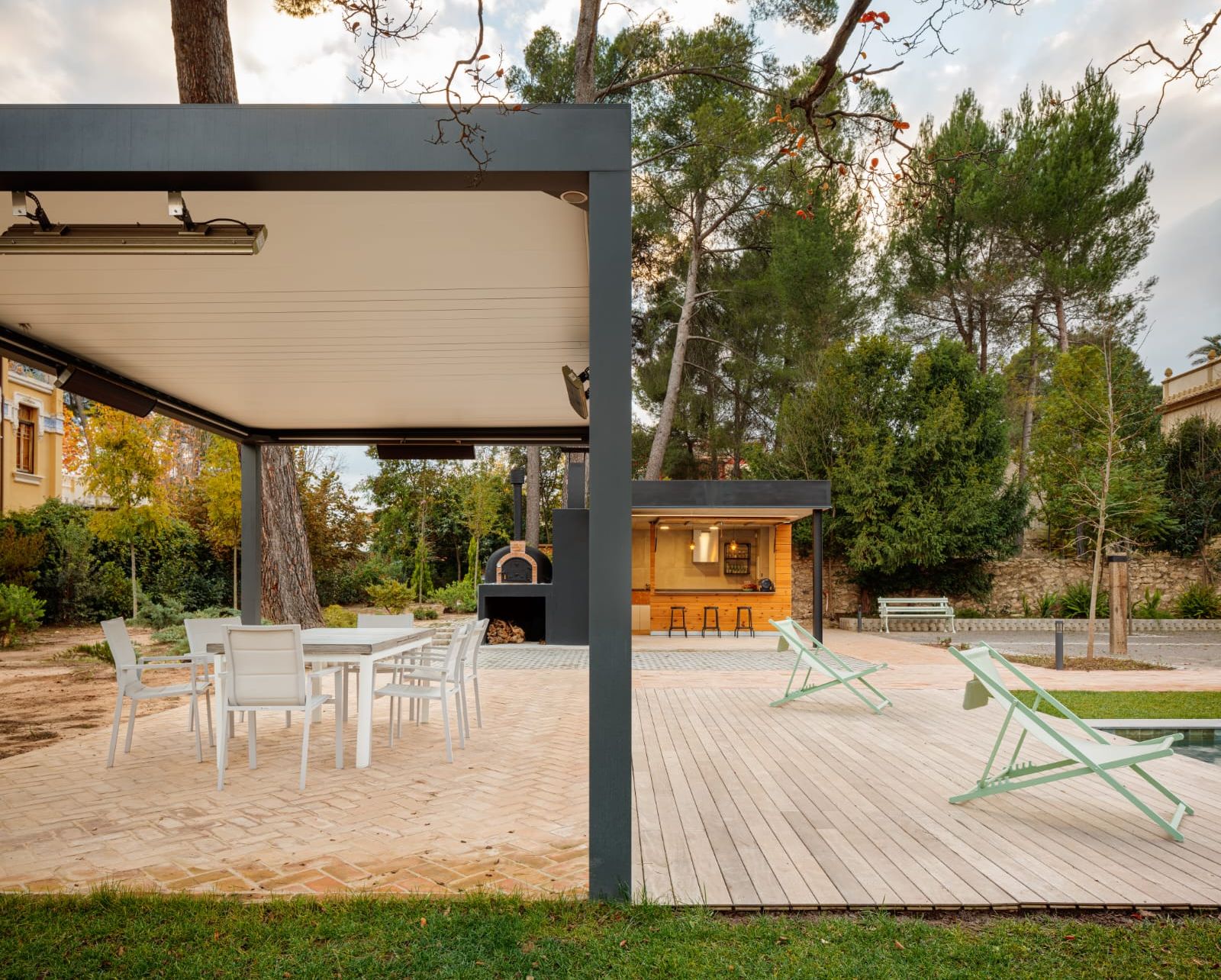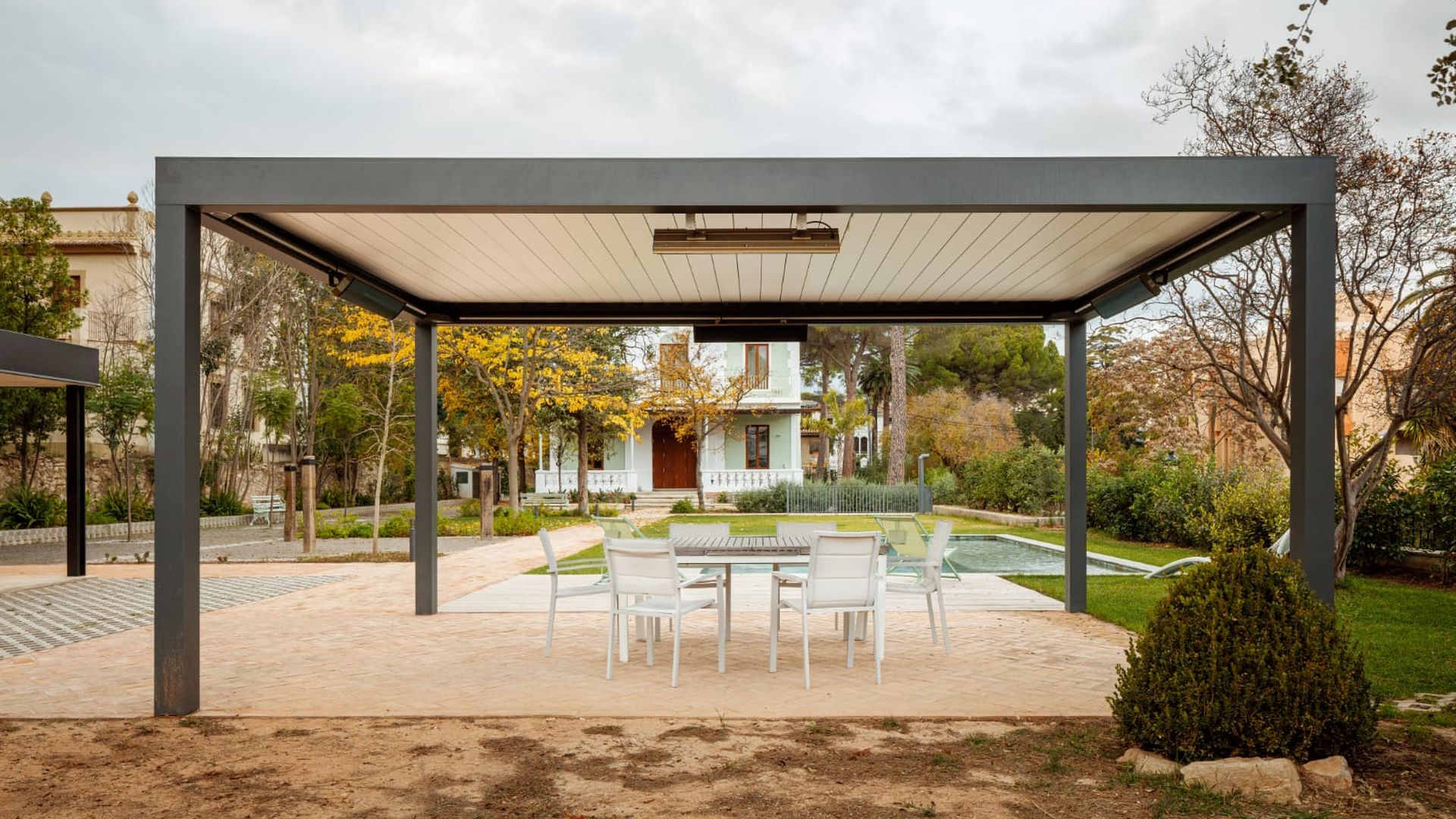Can my house be self-sufficient? And even bioclimatic!
A self-sufficient house is one that can generate and self-supply free energy and water to function autonomously, without depending on paid external supply networks.
Being independent, it is powered by renewable energy and obtains and recycles the largest number of liters of water for internal consumption, also reusing waste. This makes it possible to live wherever you want, even in uninhabited areas.
To achieve a self-sufficient home, it is necessary to follow bioclimatic architecture standards and make the most of the solar incidence and available natural resources.
In this sense, bioclimatic pergolas are an excellent option to maximize energy efficiency and achieve bioclimatic protection.
But first of all…
What is bioclimatic arquitecture?
Bioclimatic construction is an increasingly popular architectural option due to its ability to reduce environmental impacts and take advantage of natural resources.
This type of construction has a wide variety of options, but they all have a common pattern: the design of buildings taking into account the climatic conditions of the environment, taking advantage of resources such as sun, rain, wind and vegetation.
It is closely related to ecological construction. What does this mean? That the resources used must be respectful of the environment.
Likewise, the design of these structures is essential to generate the maximum environmental quality and offer maximum efficiency with minimum investment.

Elements involved in bioclimatic architecture
Bioclimatic architecture takes into account factors such as:
- Nature.
- The environment.
- Humidity.
- The temperature.
As you can see, orientation is essential to take advantage of climatic impacts such as rain, sun, wind, noise and natural light. Then, it will be the architectural design and technology that determine the living conditions in the interior spaces of the house.
To achieve good temperature adaptation in a bioclimatic project, there are four key points that help maximize the energy efficiency of the home and reduce energy consumption:
- The orientation.
- Thermal insulation with specific materials and techniques.
- Cross ventilation.
- Light and sun protection.
Advantages of bioclimatic pergolas
With the bioclimatic pergolas, you can regulate the light as desired at any time and control the heat or cold. The ventilation generated thanks to its large slats allows to obtain a natural air conditioning, which translates into enormous advantages of bioclimatic protection.
At Six96, we are committed to the environment, saving and energy efficiency, and it seems that we are not the only ones, as we have noticed a greater demand for bioclimatic pergolas.
In addition to being a product with a high aesthetic degree and distinction, they are designed to actively contribute to the self-sufficiency of our homes and the promotion of a more sustainable and healthy lifestyle.
Bioclimatic pergolas are characterized by their respect for the environment and their positive impact on the health and well-being of the people who enjoy them.
By using renewable energy, emissions of polluting gases are reduced and a more sustainable and healthy lifestyle is promoted.
You have to assume it. Bioclimatic pergolas are an excellent option to contribute to the construction of homes that are more responsible and committed to the planet, in addition to offering great advantages in terms of energy efficiency and bioclimatic protection.
Do you love the idea but still have doubts? contact with our team of professionals and discover which Six96 pergola best suits your needs.


